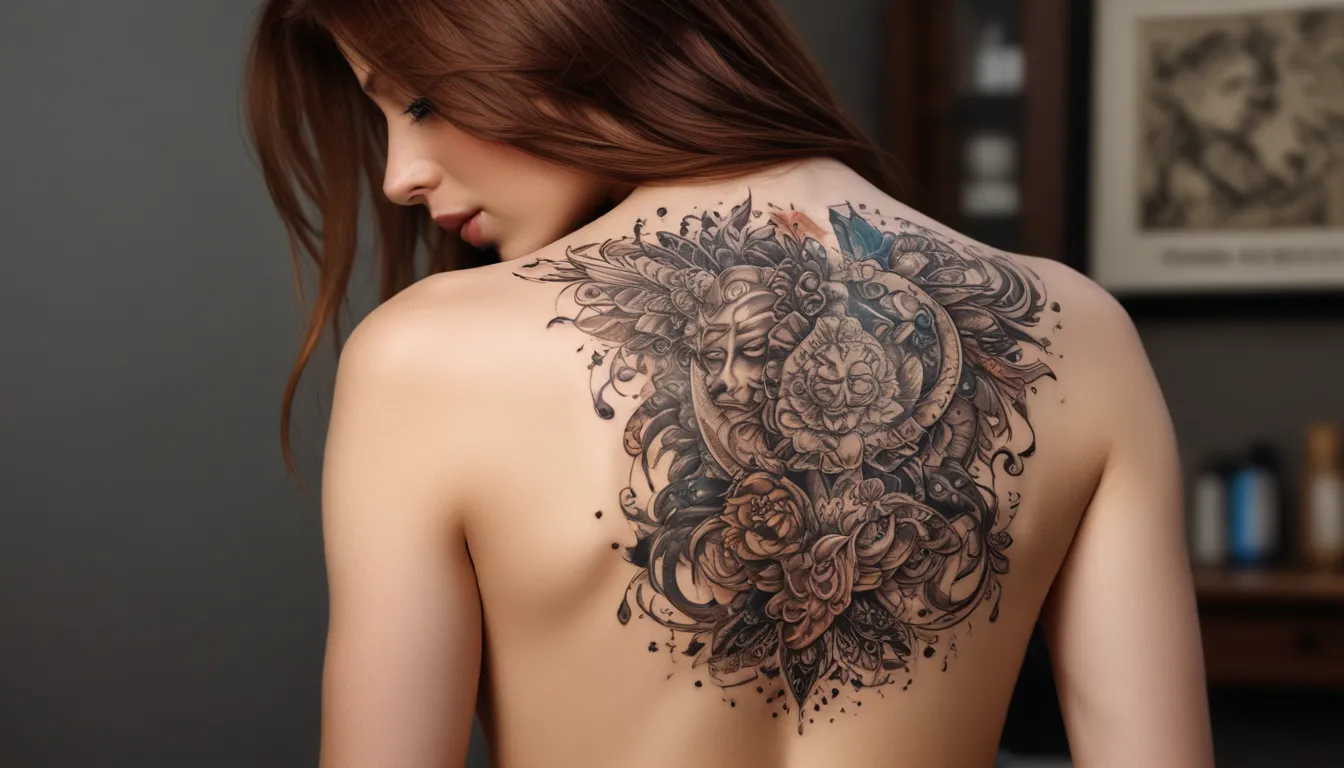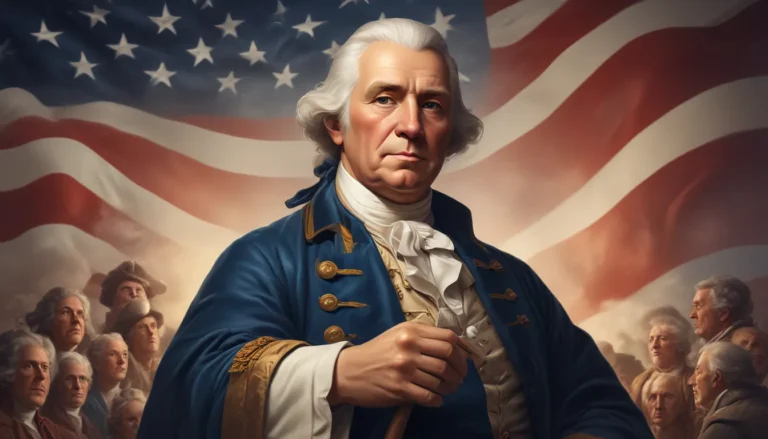The images in our articles may not match the content exactly. They are used to grab your attention, not to show the exact details in the text. The images complement the text but do not replace it.
Tattoos have a rich history that spans thousands of years, from ancient cultural practices to modern artistic expressions. The art of tattooing continues to captivate us with its diverse designs, meanings, and techniques. In this article, we will explore 10 fascinating facts about tattoos, revealing their unique stories and the profound significance they carry. Let’s dive into the enthralling realm of body art!
Tattoos Through Time: An Ancient Tradition
Contrary to popular belief, tattoos are not a recent trend but have roots dating back at least 5,000 years. The oldest known tattooed human skin belongs to Ötzi the Iceman, an ancient mummy discovered in the Alps in 1991, who lived around 3300 BCE. This discovery sheds light on the longstanding history of tattooing as a form of personal and cultural expression.
Global Tattoo Culture: A Diverse Phenomenon
Tattooing is a universal practice that transcends borders and cultures. From the intricate designs of Polynesian tribes to the symbolic markings of ancient Egyptians and Celts, tattoos have served as cultural symbols, rites of passage, and expressions of identity worldwide. Each culture imbues tattoos with unique meanings and traditions, adding to the rich tapestry of global body art.
The Art of Placement: Symbolism in Tattoo Location
The placement of a tattoo is not just a matter of aesthetics but often carries deep symbolic significance. In Maori tattoo art, known as ‘Ta Moko,’ the positioning of the tattoo on the body conveys various aspects of the individual’s identity, such as social status, ancestral lineage, and specialized skills. The art of tattoo placement adds layers of meaning to the overall design, highlighting the interconnectedness of body and soul.
Evolution of Tattoo Machines: From Innovation to Artistry
The modern tattoo machine is a product of ingenuity and adaptation. Surprisingly, its origins can be traced back to Thomas Edison, who invented an electric pen in 1876 for document duplication. Tattoo artists later repurposed this device to insert ink into the skin, laying the foundation for the sophisticated equipment used in contemporary tattoo studios. The evolution of tattoo machines reflects the fusion of technology and artistry in the realm of body modification.
Vibrant Palette: The World of Tattoo Ink
Tattoo ink comes in a rainbow of hues, allowing artists to create intricate and vibrant designs. However, not all colors are created equal when it comes to tattoo removal. Green ink poses a unique challenge due to its resistance to the removal process, requiring specific wavelengths of light for effective pigment breakdown. The diverse palette of tattoo ink adds depth and dimension to each design, enhancing the visual impact of body art.
Immune Boosting Effects: The Surprising Health Benefits of Tattoos
Getting a tattoo can have unexpected health benefits beyond the aesthetic appeal. Research suggests that receiving multiple tattoos can strengthen the immune system, enhancing the body’s immunological response. This immune-boosting effect may make subsequent tattoos less taxing on the body and contribute to faster healing post-procedure. The therapeutic potential of tattoos goes beyond skin-deep, offering a unique connection between body art and well-being.
Illuminating Creativity: UV Tattoos and Invisible Ink
UV tattoos, also known as blacklight tattoos, add a touch of mystery to traditional body art. These tattoos are created using ink that remains invisible under normal light but glows vibrantly under ultraviolet light. The interplay of light and shadow creates a striking visual effect, unveiling the hidden beauty of UV tattoos in the right lighting environment. The allure of UV tattoos lies in their transformative nature, offering a dynamic and captivating form of self-expression.
Ensuring Safety and Standards: Tattoo Regulation and Licensing
Professional tattooing is subject to stringent regulations and licensing requirements to uphold health and safety standards. Tattoo artists are typically required to obtain licenses and adhere to strict protocols to ensure client safety and well-being. Many artists undergo apprenticeships and training programs to master the craft of tattooing before practicing independently. The emphasis on regulation and licensing reflects a commitment to professionalism and ethical practices within the tattoo industry.
Changing Perceptions: Tattoos in the Modern Workplace
Attitudes towards tattoos in the workplace have evolved in recent years, reflecting shifting societal norms and values. While tattoos were once stigmatized as unprofessional, many employers now embrace visible tattoos as a form of self-expression and individuality. Some workplaces even encourage employees to showcase their tattoos as a testament to diversity and inclusion. The acceptance of tattoos in professional settings underscores the changing landscape of cultural acceptance and personal expression.
Dispelling Myths: Tattoos and MRI Scans
One common misconception surrounding tattoos is their compatibility with medical procedures like MRI scans. While there have been isolated cases of tattoo reactions due to specific ink compositions, the majority of modern tattoo inks pose no risk during MRI scans. Advances in technology and tattoo ink formulations have minimized the potential interference of tattoos with medical imaging procedures, ensuring the safety and well-being of individuals with body art. The myth of tattoos impeding MRI scans is debunked through scientific knowledge and innovations in tattoo ink chemistry.
Conclusion: Embracing the Artistic Legacy of Tattoos
In conclusion, tattoos embody a rich tapestry of artistry, culture, and personal narratives that transcend time and space. The 10 facts explored in this article offer a glimpse into the enthralling world of tattoos, showcasing their ancient origins, diverse styles, and profound symbolism. Whether you are a seasoned tattoo enthusiast or a curious observer, the allure of body art resonates with the universal desire for self-expression and creativity. As we celebrate the enduring legacy of tattoos, let us appreciate the craftsmanship, cultural significance, and individual stories that make each tattoo a unique and meaningful work of art.
Your Feedback Matters
Our dedication to delivering informative and engaging content is at the core of our mission. Each fact shared on our platform is contributed by individuals like you, enriching our collective knowledge and understanding of the world. To uphold the highest standards of accuracy and authenticity, our team of editors meticulously reviews all submissions to ensure that the information we provide is both captivating and reliable. Trust in our commitment to quality and integrity as you explore the diverse world of facts and insights with us.






